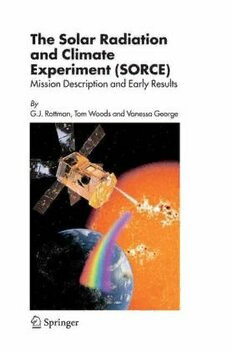
The Solar Radiation and Climate Experiment (SORCE): Mission Description and Early Results PDF
410 Pages·2006·22.363 MB·English
Most books are stored in the elastic cloud where traffic is expensive. For this reason, we have a limit on daily download.
Preview The Solar Radiation and Climate Experiment (SORCE): Mission Description and Early Results
Description:
The Solar Radiation and Climate Experiment (SORCE) is a small, free-flying satellite carrying four scientific instruments to measure the solar radiation incident at the top of the Earth’s atmosphere. SORCE was successfully launched from NASA’s Kennedy Space Center on 25 January 2003. As one element of NASA’s Earth Science Enterprise, the SORCE mission is a joint effort between NASA and the Laboratory for Atmospheric and Space Physics (LASP). The primary objectives of SORCE are to make daily measurements of Total Solar Irradiance, TSI, and spectral irradiance over almost the entire spectral range from soft X-rays, through the visible, and into the infrared. The SORCE instruments – the Total Irradiance Monitor (TIM), the Spectral Irradiance Monitor (SIM), two Solar Stellar Irradiance Comparison Experiments (SOLSTICE), and the XUV Photometer System (XPS) – are currently measuring the Sun’s total and spectral irradiance with unprecedented accuracy and precision capable of establishing solar variability. In addition to securing a reliable long-term database with which to characterize solar radiative forcing of climate and global change, the SORCE program seeks to foster new understanding of the origins of the solar variations and the physical pathways by which the Earth’s atmosphere, oceans, and land respond on multiple time scales. This collection of papers describes the SORCE mission, goals, spacecraft, instrument development and calibration, planning software, ground operations, data processing, early science results, and science implications on how the Sun influences Earth’s environment.
See more
The list of books you might like
Most books are stored in the elastic cloud where traffic is expensive. For this reason, we have a limit on daily download.
